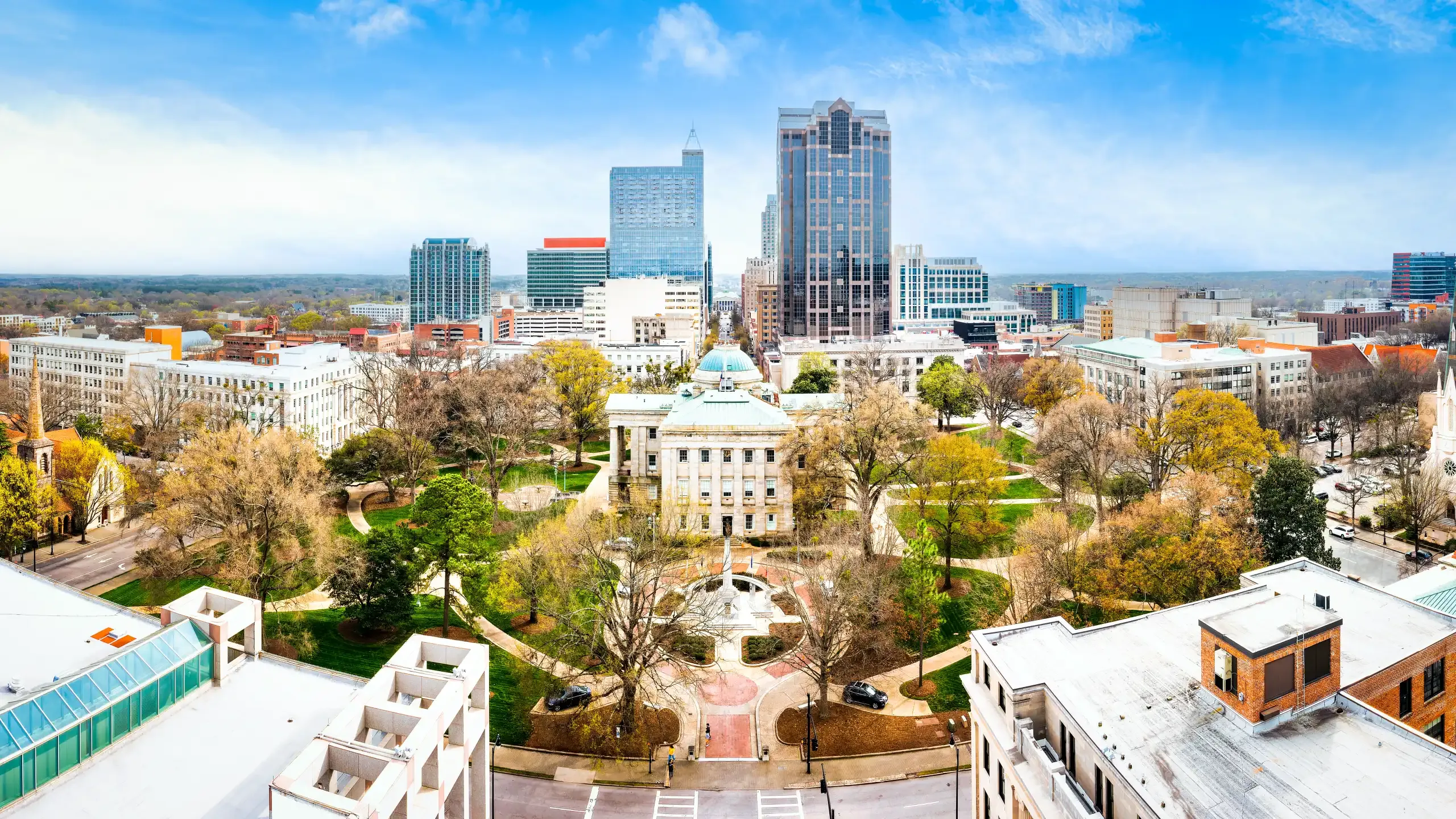

Raleigh, North Carolina, has undergone a stunning transformation—from a modest capital city to one of the fastest-growing metro areas in the country. Its journey is rich with history, marked by pivotal developments in education, industry, and community growth. As the city continues to evolve, understanding how Raleigh got here provides valuable insight into where it’s headed next.
A Planned Capital with Big Potential
Established in 1792, Raleigh was one of the few U.S. cities specifically designed to be a state capital. The state purchased 1,000 acres from landowner Joel Lane and designed the city on a grid system with Fayetteville Street at its core. Though it remained small for much of the 19th century, the arrival of the railroad in the 1840s spurred new industries and growth.
Raleigh’s identity as an education hub began early. Institutions like UNC-Chapel Hill (founded in 1789), Shaw University (1865), and Peace College—now William Peace University (1857)—laid the groundwork for a strong academic presence. North Carolina State University, established in 1887, and Duke University, founded in 1924 in nearby Durham, would later help position Raleigh as a center for research and innovation.

The Rise of Research and Suburban Expansion
By the early 20th century, Raleigh was embracing urban infrastructure. A streetcar system connected neighborhoods like Oakwood and Cameron Park to downtown, while major roadways like U.S. Route 1 opened the door to commerce and connectivity. Post–World War II, Raleigh experienced a suburban boom, marked by developments such as Cameron Village (now the Village District) in 1949 and North Hills in the 1960s.
A pivotal moment came in 1959 with the establishment of Research Triangle Park (RTP). Designed to retain local university graduates and attract high-tech employers, RTP quickly became a magnet for companies like IBM and GlaxoSmithKline. This shift positioned Raleigh as a growing economic powerhouse, especially through the 1970s and 1980s.

A Real Estate Boom Fueled by Opportunity
As job opportunities increased, so did population growth. Raleigh’s population surged from around 122,000 in 1970 to over 500,000 today, with Wake County now home to more than 1.1 million residents. The housing market responded in kind, with new developments flourishing in suburban areas like Cary, Apex, Holly Springs, and Wake Forest.
Downtown Raleigh, once quieter, also saw renewed investment. The 2006 reopening of Fayetteville Street helped ignite a downtown revival, with restaurants, apartments, and nightlife reenergizing areas like Glenwood South and the Warehouse District. The opening of Union Station in 2018 further improved connectivity and downtown’s appeal.

Current Trends and a Forward-Looking Vision
Raleigh’s real estate market reflects its ongoing evolution. In 2010, the median home price hovered around $210,000. Today, it’s more than $400,000—a sign of both strong demand and growing equity opportunities for homeowners.
Looking ahead, several major developments are poised to shape Raleigh’s next chapter:
- Apple’s $1 billion campus at RTP, expected to bring 3,000 jobs by 2026.
- The Raleigh Sports and Entertainment District, transforming the area around PNC Arena into a vibrant 80-acre mixed-use development.
- S-Line rail corridor project, which will reintroduce passenger service between Raleigh and Richmond.
- I-540 expansion, completing a loop around the city to improve traffic flow.
Downtown Raleigh is also entering a new era. The 2024 Economic Development Strategy aims to create more pedestrian-friendly spaces, enhance public infrastructure, and incorporate arts and culture into urban design. Meanwhile, the Raleigh Convention Center expansion and the ambitious Downtown South project are expected to boost economic activity and community engagement.

Raleigh’s Bright Road Ahead
Raleigh’s journey from a small government town to a dynamic city is a testament to its resilience and vision. With strong academic roots, a booming job market, and robust development plans, it’s no surprise that more people are choosing to call this city home.
If you’re considering relocating to Raleigh or simply want to explore what it has to offer, tools like the Neighborhood Match Survey and the Raleigh Relocation Guide are excellent starting points. Or, connect directly with one of our experienced agents to help you navigate the market with confidence.



Social Cookies
Social Cookies are used to enable you to share pages and content you find interesting throughout the website through third-party social networking or other websites (including, potentially for advertising purposes related to social networking).